Sean Van Sommeran secures the Mavrix
at a mooring in Santa Cruz Harbor then assembles his team at the stern
of the boat for a group photo. He flashes a boyish grin as he poses
with five colleagues from the Pelagic Shark Research Foundation, a
Santa Cruz based non-profit that Van Sommeran launched in 1987. The
team's upright tagging poles reach towards the sky, beyond the top of
the camera's viewfinder; their length is a vivid reminder that white
shark tagging presents special challenges. A skilled team member must
seize the all-too-brief window of opportunity to tag on the fly as
TOPP's top predator glides silently alongside the vessel, which at
times seems dwarfed by looming shape in the water.
Van
Sommeran and his team are very good at this work, and he is justifiably
proud of their efficiency and speed. This year, that prowess earned Van
Sommeran a role in TOPP's white shark study and his crew has deployed
over 14 pop up satellite tags on sharks that frequent the waters around
Ano Nuevo Island, a major rookery for elephant seals.
A native
Californian, Van Sommeran grew up in the coastal town of Santa Cruz,
where the ocean gripped a growing boy's imagination and retained a
profound hold on him as an adult. He recalls his youth in the 70's,
when the movie "Jaws" colored public perception of white sharks with
its graphic -- and distorted -- portrayal of the animal as a malevolent
killing machine. Decades later, Van Sommeran and other shark experts
still find it an uphill journey to dispel white shark misconceptions
and educate the public about this much-maligned, and poorly understood
species.
An upside of the white shark's high profile in
popular culture is the curiosity it continues to arouse in people. Many
a youngster has developed an enduring fascination with white sharks,
and such interest frequently underpins careers of dedicated and highly
focused professionals. Van Sommeran is a good example.
On a
fishing trip with a family friend, Van Sommeran got a chance to see an
actual white shark feeding event first hand. Watching the shark attack
an elephant seal left a lasting impression on the twelve year old. As
an adult, Van Sommeran worked for Fish and Game tagging rockfish and
other species.
In 1989, following a trickle of reports from
fishermen about large sharks near Santa Cruz., a local newspaper picked
up the stories of white sharks swimming in numbers just off shore.
"What they were seeing were basking sharks," explains Van Sommeran, who
diligently contacted the newspaper to correct the misinformation and
assure the public that the sharks were actually harmless- and vulnerable.
Van
Sommeran watched with surprise and alarm as the public reaction shifted
from fear to aggression. Suddenly, the hunt was on, from harassment by
jet skiers and pleasure boaters to the sport and commercial fishers who
targeted the sharks for their fins and livers.
Saddened by the
wanton local desctrucion, and wanting to stem the general decline of
shark populations, Van Sommeran solicited the help of the Earth Island
Institute, and in 1990, launched the Pelagic Shark Research Foundation,
a not-for-profit research, education and outreach organization. Since
then, he has been and remains, a strident and tireless advocate for the
open ocean predators.
Working entirely with volunteer staff, Van
Sommeran and his team have access to three boats, which they deploy in
a number of projects. Like TOPP colleague Scot Anderson, Van Sommeran's
team scrupulously IDs the sharks visually, with the aid of a
pole-mounted underwater video camera. Van Sommeran is also fortunate in
having a professional photographer, Callaghan Fritz-Cope on staff,
enabling the organization to boast an impressive collection of
often-dramatic field shots of white sharks.
Van Sommeran is
pleased to collaborate with TOPP, and the white shark researchers at
Stanford are happy to have his organization on board. With the help of
the Ano Nuevo group, this year has proven to be a watershed year for
adult white shark tagging with more TOPP white shark tags in the field
than ever before.
For Van Sommeran and his team at the Pelagic
Shark Research Foundation, TOPP affiliation brings the group all the
benefits of inclusion in a large, multidisciplinary project. The data
from the sharks they tag will be analyzed in a broad multi-species
context, and integrated with oceanographic data from remote sensing
satellites. Soon, shark researchers will be looking at the tracks of
white sharks from all three of the program's study areas. With a larger
sample size of these sharks, we can only speculate about what new
insights might emerge from the data.
For Van Sommeran and his
colleagues, however, the work doesn't end when the TOPP tags are
deployed. He is out on the water nearly every single day conditions
permit. If he is not observing or tagging white sharks, he is taking
individuals and groups out into his Santa Cruz "backyard" on chartered
trips.
Originally posted on topp.org on 01/04/06
pelagic.org ANI Research Page
Back to pelagic.org
|
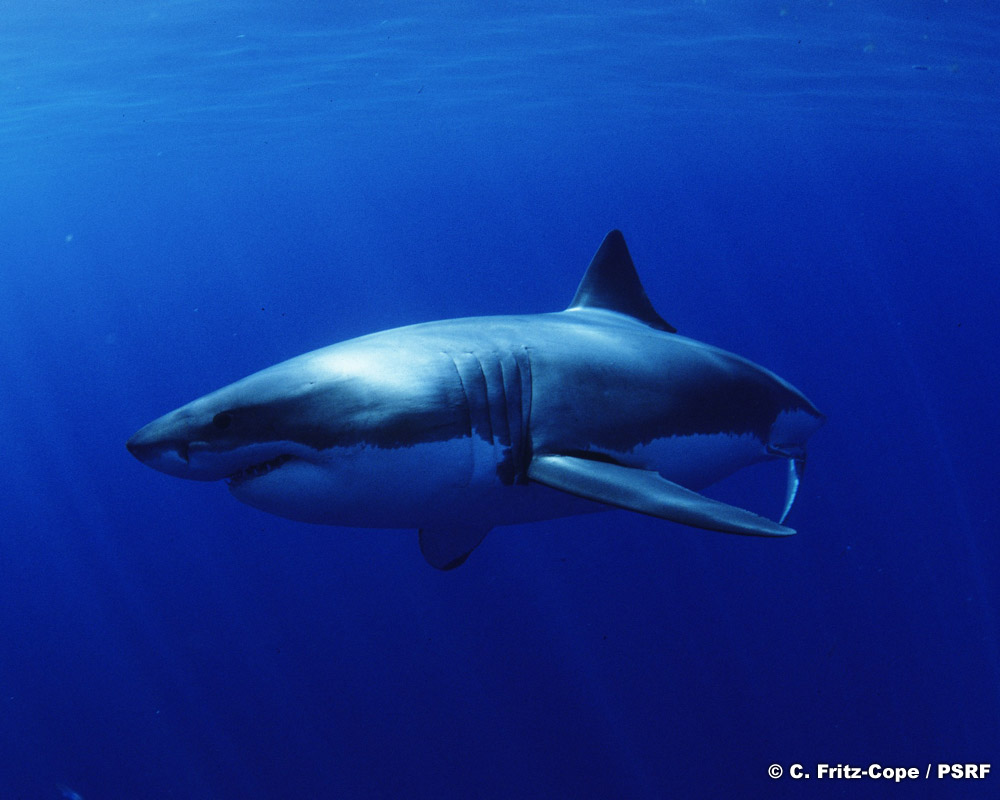
White Shark, Carcharodon carcharias
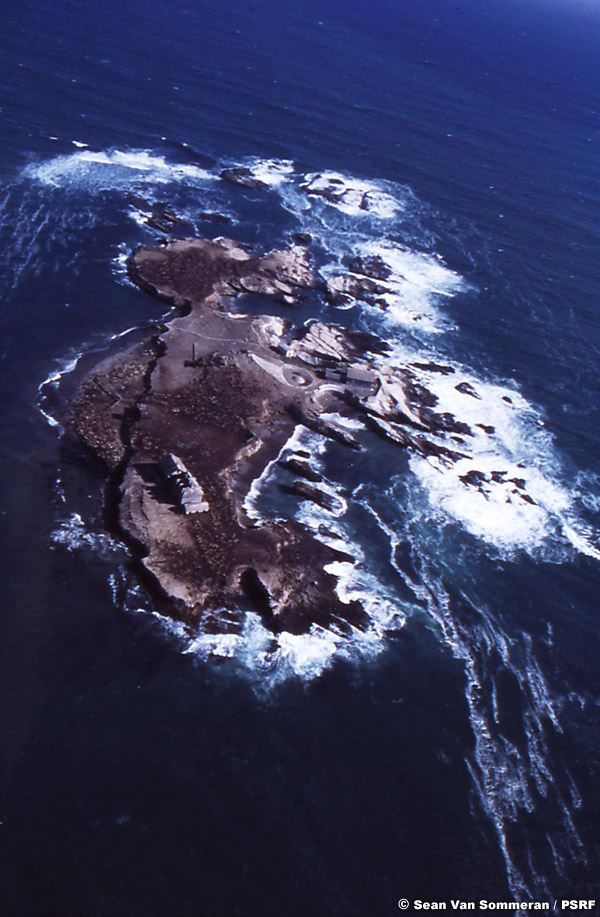
Area of Operation, Aņo Nuevo Island
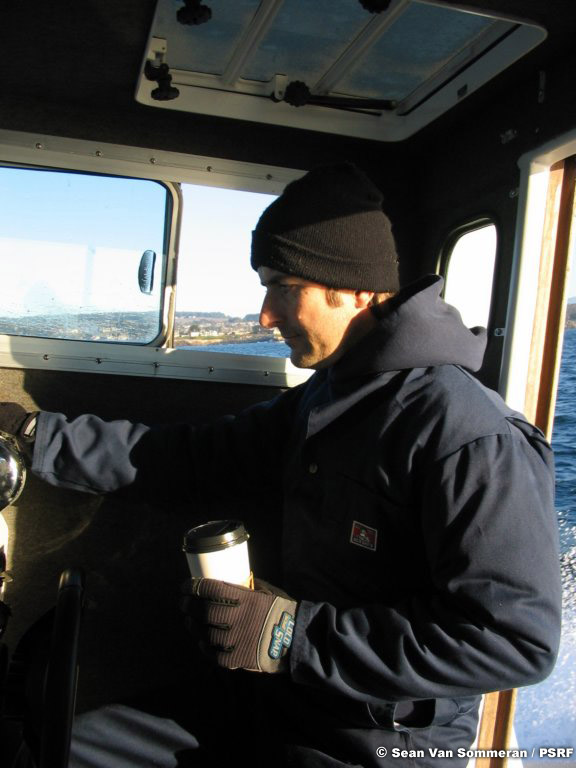
Callaghan skippers the Mavrix

PSRF research vessel Mavrix engaged with white shark off ANI
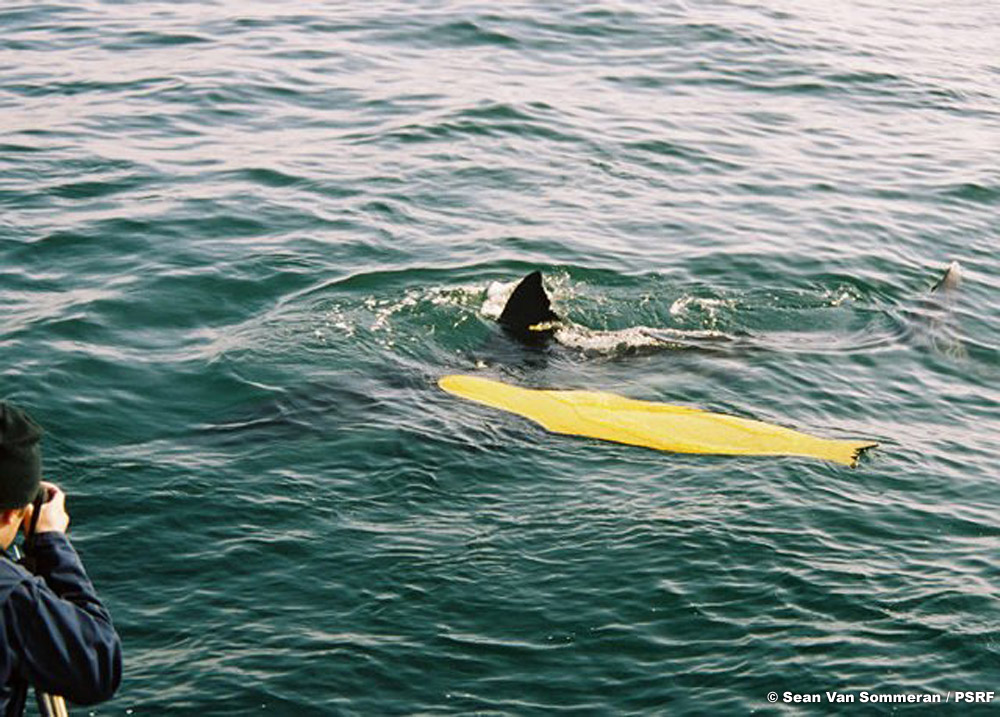
Callaghan Fritz-Cope catches a photo ID

Callaghan's ID of first dorsal
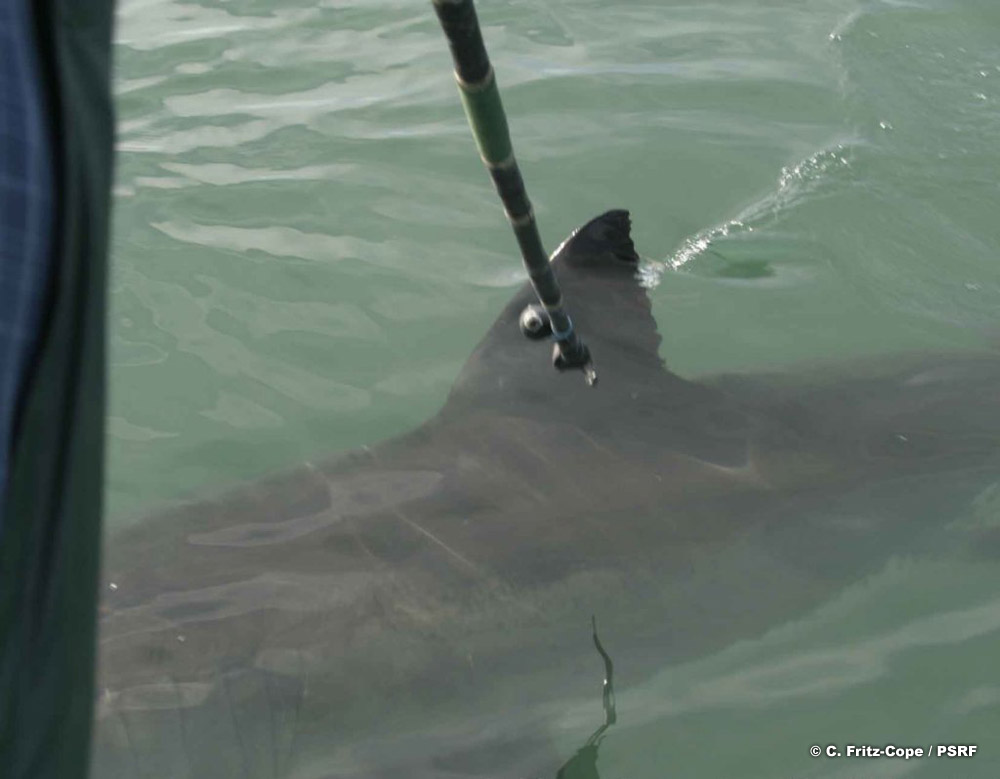
Prepared for deployment

Sean deploys a transmitter on 4 meter white shark
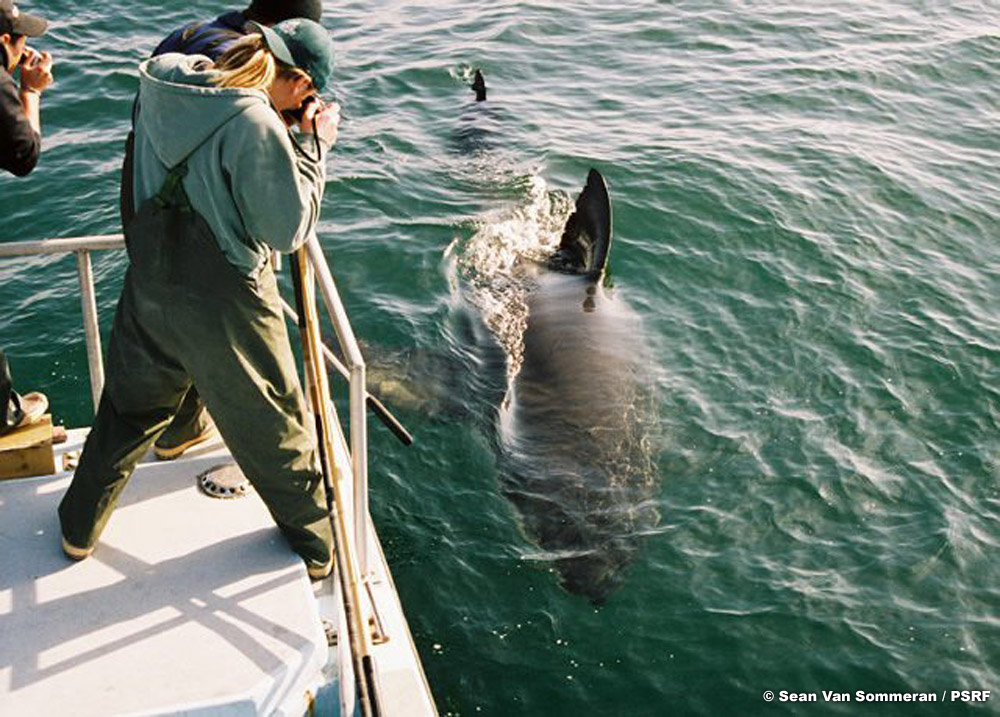
Team Pelagic engages a white shark during survey
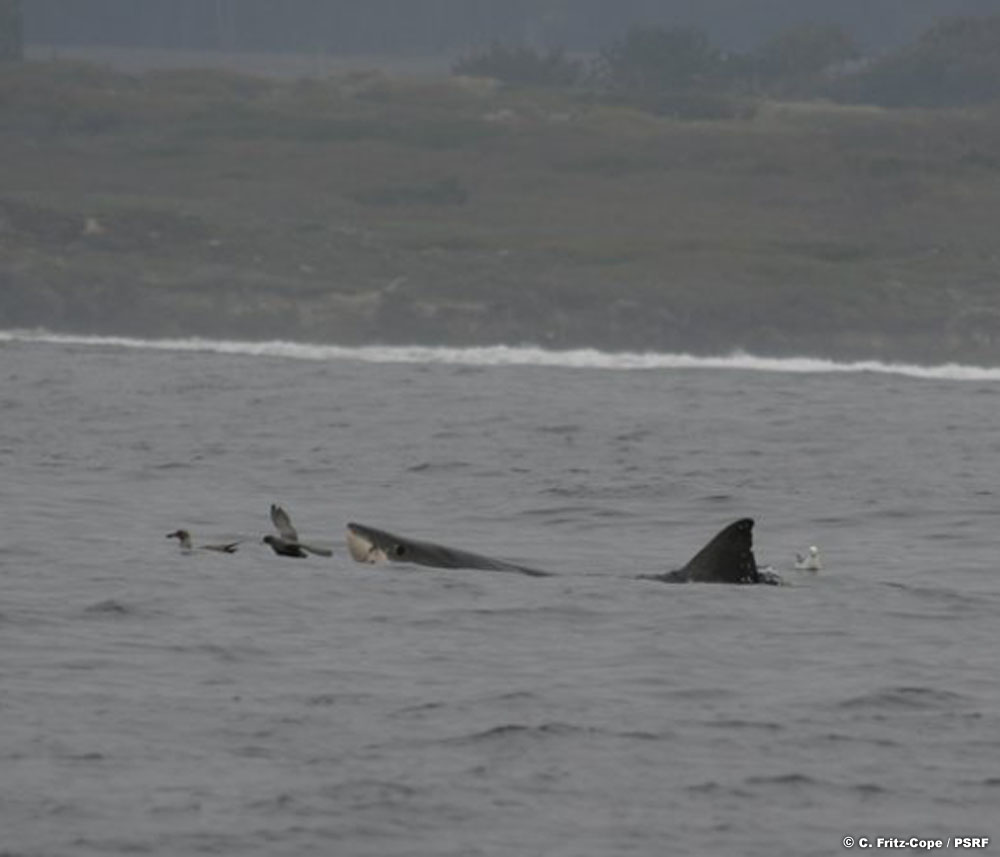
A White Shark preys upon a seal off ANI
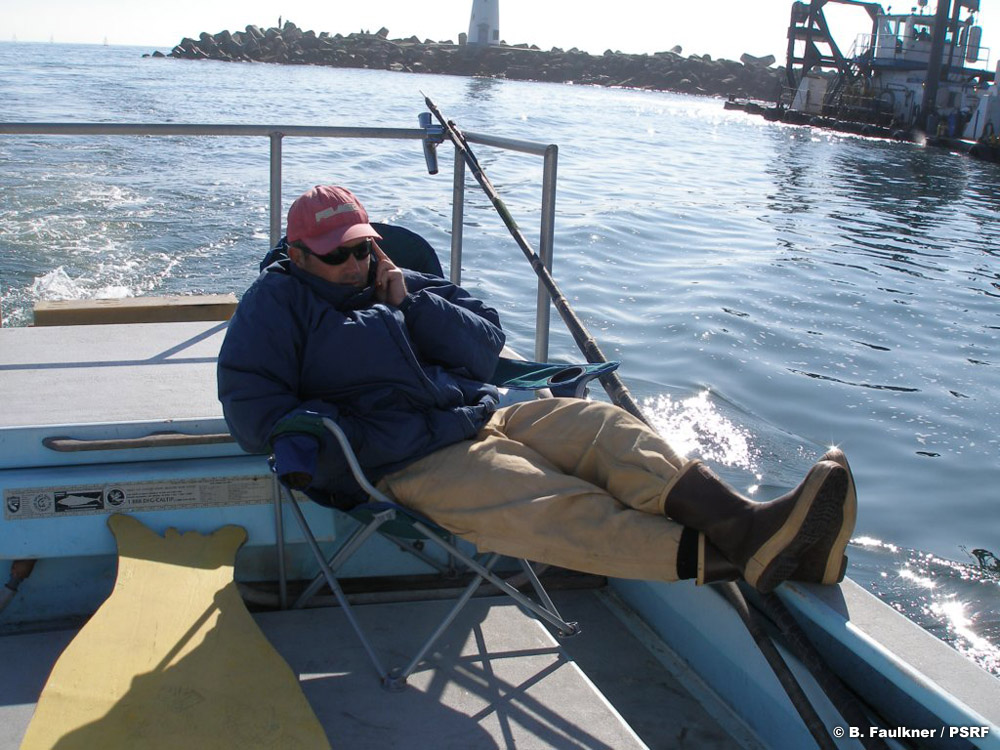
Sean Van Sommeran, Executive Director
|